| Gemstone Chart |
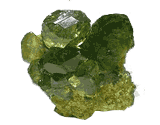 Natural Demantoid Natural Demantoid
The demantoid is one of the most brilliant gemstones that exist, yet until recently it was little known except among collectors and gemstone lovers.
Color: Green, yellow green.
Categories: semi-precious stone
Chemical Composition: Ca3Fe2(SiO4)3
Crystal Group: Cubic
Refractive Index: 1.888 - 1.889
Hardness: 6.5
Density: 3.82 - 3.50
Occurrence: Russia, Namibia, Iran, South Africa
| 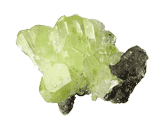 Natural Diopside Natural Diopside
Diopside is a common mineral and is found worldwide. Diopside has several varieties, including a chromium-rich gem variety called chrome diopside.
Color: pale bluish green or dark blue green, brownish green or dark blue green. yellowish green or yellow bluish green.
Categories: semi-precious stone
Chemical Composition: CaMgSi2O6
Crystal Group: Monoclinic
Refractive Index: 1.665 - 1.730
Hardness: 6
Density: 3.25 - 3.55
| 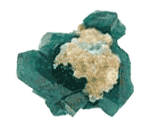 Natural Dioptase Natural Dioptase
Dioptase is an intense emerald-green to bluish-green copper cyclosilicate mineral.Dioptase is a rather unusual gemstone that will rarely be found in your basic jewelry stores. It is a beautiful gemstone with a very unusual combination of green colors.
Color: Dark blue green, emerald green, or turquoise
Categories: semi-precious stone
Chemical Composition: CuSiO2(OH) 2
Crystal Group: Hexagonal
Refractive Index: RI 1.644 ĘC 1.709
Hardness: 5
Density: 3.28 ĘC 3.55
Occurrence: Russia, Tsumeb Namibia, California and Colorado USA, Congo, Zaire, Chile
| 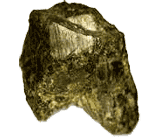 Natural Enstatite Natural Enstatite
Enstatite is a relatively common mineral, but is rarely used for jewelry purposes. It is generally cut for gem connoisseurs and collectors rather than for the common consumer.
Color: Gray, green, brown, orange-brown, yellowish-brown, colorless, pale yellow.
Categories: semi-precious stone
Chemical Composition: MgSiO3
Crystal Group: Orthorhombic
Refractive Index: 1.663-1.673
Hardness: 5.5
Density: 3.26-3.28
Occurrence: South Africa, Burma, Tanzania, Sri Lanka, Kenya, Germany, Norway, Greenland
| 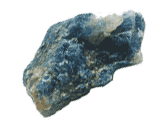 Natural Euclase Natural Euclase
Euclase is a rare mineral, resembling beryl in color and hardness.Euclase is found in granitic pegmatites with other gem minerals such as topaz and beryl.
Color: White, pale blue, greenish blue, dark blue.
Categories: semi-precious stone
Chemical Composition: BeAlSiO4(OH)
Crystal Group: Monoclinic
Refractive Index: 1.652-1.672
Hardness: 7.5
Density: 3.18
Occurrence: Brazil, Tanzania, Russia, Zimbabwe, Madagascar, Austria.
| 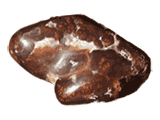 Natural Fire Agate Natural Fire Agate
Fire Agate is a variety of agate containing inclusions of goethite or limonite, it is a layered stone. The layers are small enough that light entering them forms interference colors known as "fire."
Color: Orange, green, purple, Red, blue, peacock
Categories: semi-precious stone
Chemical Composition: SiO2
Crystal Group: Trigonal
Refractive Index: 1.544 - 1.553
Hardness: 7
Density: 2.65
Occurrence: Central Mexico, Arizona USA
| 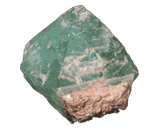 Natural Fluorite Natural Fluorite
Fluorite has a wide range of colors including yellow, blue, pink purple and green. It is an interesting and beautiful gemstone.
Color: Colorless, yellow, brown, green, blue, violet, pink
Categories: semi-precious stone
Chemical Composition: CaF2
Crystal Group: Cubic
Refractive Index: 1.43
Hardness: 4
Density: 3.18
Occurrence: Namibia, U.K., Switzerland, Nigeria, Czechoslovakia, Canada, Poland, Italy, Norway, Germany, U.S.A.
| 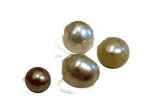 Natural Freshwater Pearl Natural Freshwater Pearl
Freshwater pearls are a kind of pearl that comes from freshwater mussels.Freshwater pearls come in many shapes from round to button shapes, from flat flakes to rice shapes and in many colors. As with the salt water Akoya pearl the round shapes are generally more expensive.
Color: orange, pink, white, gray, light purple, rose, black, brown, gold, yellow, silvery, green, blue, bronze.
Categories: semi-precious stone
Chemical Composition: CaCO3
Crystal Group: Not applicable
Hardness: 3.5 - 4.0
Density: 2.66 ĘC 2.78+
Occurrence: China, Japan
|
|
